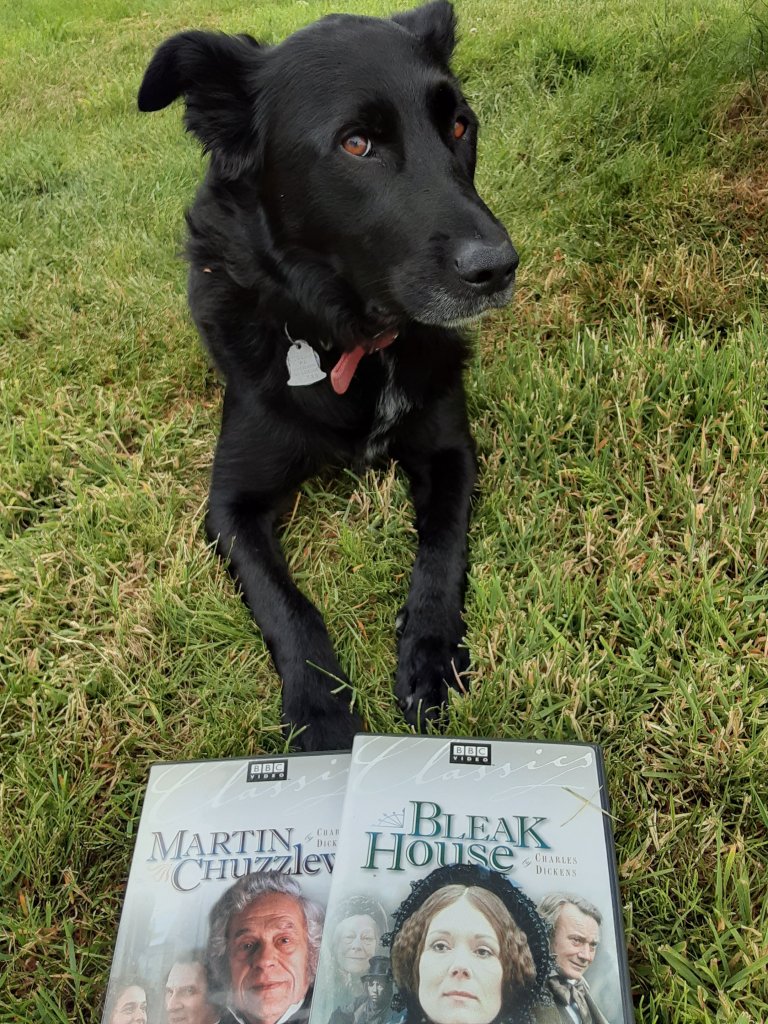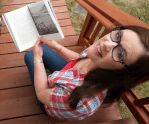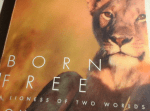Have you ever re-discovered a book from your childhood that still has the power to move and profoundly impact you, even a half century after your initial read? If so, then you’ve found a true classic.

Pinterest
Joy Adamson’s Born Free: A Lioness of Two Worlds is such a book.
A Remarkable True Story
Evocative and compelling, Born Free is the remarkable true story of Elsa, an orphaned lion cub raised by Joy Adamson and her husband, George.
At its core, Born Free is a love story. With great sensitivity and precision, Adamson chronicles the mutual affection and bond between a magnificent lioness and the humans who loved her enough to set her free.
It’s probably the most moving and inspiring “animal story” I’ve ever read.
Joy Adamson wrote three books about African lions: Born Free, Living Free, and Forever Free. I read them all. Born Free is my favorite.
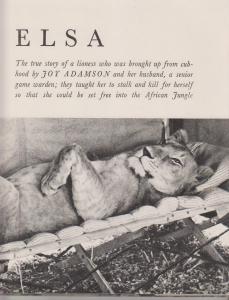
I first read Born Free in 1969, nine years after it was first published. I was in the fifth grade. Entranced, I read it over and over. There’s something timeless and transcendent about the story that’s difficult to put into words.
I lost track of Adamson and Elsa over the years. But I never forgot the extraordinary story of a free born lioness and the humans who loved her. I recently located a library copy of Born Free. Finally.

Elsa and “Born Free” author Joy Adamson.
Like a Ton of Bricks
Opening the Forward to the Fortieth Anniversary Edition (2000), I was startled to learn that Joy Adamson was stabbed to death by a disgruntled former employee in 1980. The news hit me like a ton of bricks. I felt like I’d lost a best friend I’d never met. So it was with a mixed sense of sadness and reverence that I sat in a sun-soaked living room in a far corner of the Pacific Northwest nearly forty years after that sad event and re-opened a book that profoundly impacted my life, especially with regard to animals.
Lavishly illustrated with black and white photographs, Elsa’s story is still an unforgettable one. So is Adamson’s prodigious writing talent. Her breezy, bucolic style recalls another formidable literary talent who writes so evocatively about her life in Kenya: Isak Dinesen. Like Dinesen, Adamson’s descriptions of her life as the wife of a senior game warden in East Africa have a luminous quality that is almost melodic.
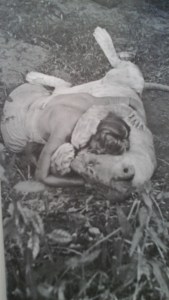
My favorite photo from the book. Joy Adamson and Elsa.
I read Born Free cover to cover in one sitting. Here’s a key line, from page 109:
“Her (Elsa’s) good-natured temperament was certainly due in part to her character, but part too may have come from the fact that neither force nor frustration was ever used to adapt her to our way of life. For we tried by kindness alone to help her to overcome the differences that lie between our two worlds.”
The Adamsons and Elsa succeed beyond all expectations.
Patiently Waiting
Re-reading the last chapter, The Final Test, the same intense sense of sadness and loss these pages evoked in me five decades ago bubbled up again from some deep internal well. It was as if Elsa and her human pride had never left, patiently waiting 50 years for my return to their story.
Recording Elsa’s success in finding her own wild pride and mate, Adamson writes:
“We returned to camp alone, and very sad. Should we leave her now, and so close a very important chapter of our lives?”
The Adamsons decide to wait “a few more days” to make sure Elsa has been accepted by the pride.
In the final elegiac paragraph, Adamson returns to her “studio” by the river to continue writing the story of Elsa, “who had been with us until this morning.” Sad to be alone, the author writes that she tries to make herself happy “by imagining that at this very moment Elsa was rubbing her soft skin against another lion’s skin and resting with him in the shade, as she had often rested here with me.”
I cried. Again.
And that, friends, is the mark of a true classic.

Elsa on Camp Bed Photo Credit
Author’s note: This post was first published on Pages and Paws in June 2019. We thought it deserves a second run. – Mom and The Kimster



